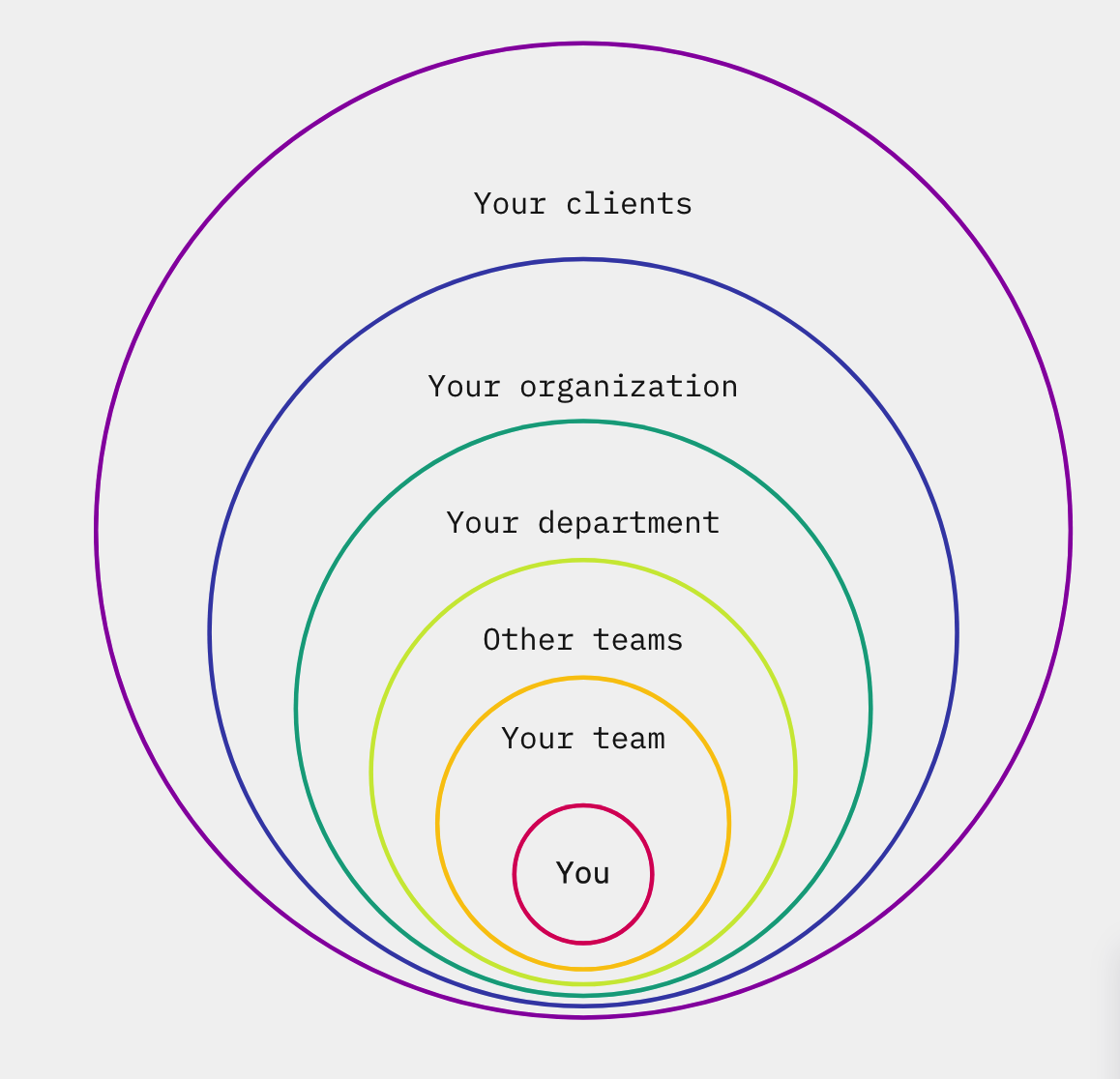Map Out Your Stakeholders
Test reporting is part of a feedback loop. It's the beginning of a conversation, not the end. Knowing who you're having that conversation with allows you to provide those individuals better information for their context.
If you find a big nasty bug, you might report it differently if your audience is a developer on your team who you work with everyday, a developer on another team who you haven't met, or the Head of Product looking to give an important demo. Reporting on the breath, depth, focus, and impediments to your testing can help your audience guide your upcoming testing.
Joep Schuurkes and I had an activity as part of workshop on test reporting at TestBash Manchester 2019. I believe he articulated the key idea: if your test reporting depends on your audience, you have to know who your audience is. We had participants map out (with paper and markers) who the stakeholders were for their testing. Some people drew org charts, other drew mind maps.
In the test reporting workshop I held yesterday, we used a Miro board to map out our stakeholders. As examples, I made an overview of how I was thinking about my recent team.

And a version of Dan Ashby's Layers of Influence model, the "shallot" of influence, if you will.

While these are stated with people's roles, doing this for yourself using people's actual names (or names + roles) will help you think about who they are and what they listening for.
Identifying the audience for your test report allows you to tailor it to the risks they care about. If you're not sure how to tailor the report, present them with something and find out if that's what they want. Even better, share with them that you're trying to figure out how to make your work most effective for them.
More things to read:
- Other posts on test reporting
- Questions left over from an Ask Me Anything on test reporting
- Having the conversation about the conversation, or delivering meta-information